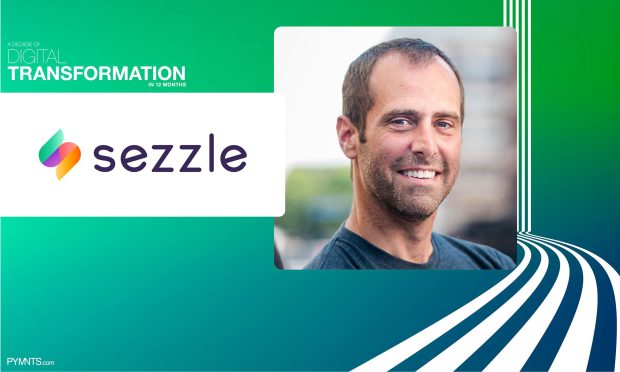Next-Gen Payments: A Trend That Is Here To Stay

In A Decade of Digital Transformation in 12 Months, 46 C-suite executives spoke with PYMNTS for its Q2 eBook on what the world will look like as recovery rolls on and the next iteration of normal rolls out. In this excerpt, Charlie Youakim, CEO of Sezzle, explores the shift toward a new generation of digital payments, and how alternative payments like the buy now, pay later (BNPL) trend became an attractive option in 2020.
Read the entire eBook here.
The COVID-19 pandemic turned the world upside down, with many businesses forced to adapt on the fly and accelerate their digital transformation. In particular, payments, commerce and the connected ecosystem were rapidly reshaped and reformed, altering the way business was conducted.
Now that the country is continuing to reopen and the economy is moving closer to a pre-pandemic level, the question has emerged: What deep-impact trends are actually here to stay? Even though it is early, we are already beginning to see some trends that are poised to last — particularly related to payments of the next generation.
For so many people, alternative payments like the buy now, pay later (BNPL) trend became an attractive option in 2020 — and it’s not going anywhere. This should not come as a surprise. Last year, there was a surge in eCommerce. As brick-and-mortar stores around the country had to close their doors due to statewide shutdowns, businesses were forced to shift to a digital marketplace. With the rise in eCommerce also came a strong interest in alternative spending options. Through BNPL, consumers found an option that allowed them financial flexibility, as they could shop and pay in interest-free installments at certain stores — something that was especially helpful for those financially impacted by the pandemic. Additionally, through BNPL, companies have been able to expand their overall consumer base, making it an appealing option for them as well.
The shift toward a new generation of digital payments has been meteoric. Consider that last year, BNPL services were up roughly 78 percent. However, it is not surprising to see the escalating popularity of BNPL in the United States, especially considering its prevalence overseas. In fact, according to data from FIS Global, BNPL accounted for over 7 percent of eCommerce transactions last year. And in Sweden, nearly a quarter of eCommerce transactions were done through BNPL.
The popularity of BNPL shows no signs of slowing down. According to the 2021 Global Payments Report by Worldpay from FIS, the BNPL market is projected to grow by an astounding 181 percent by 2024. Additionally, BNPL is expected to make up 4 percent of total eCommerce spending by 2024.
It seems like each day, a new company embraces BNPL. For businesses that have increasingly relied on a digital marketplace over the past year-plus, BNPL can attract new consumers who may not have been there before. Recent data has shown that those consumers who have embraced BNPL are not isolated users. According to a survey from Cardify.ai, 55 percent of consumers said they used BNPL one or two times last year. Roughly 25 percent said they used it between three and five times, while 10 percent noted that they use BNPL on a consistent basis.
Ultimately, as the country begins to rebound and the economy heads toward a pre-COVID level, it is clear that there will be permanent changes to the marketplace. And as the last year has shown, the rise of digital payments and BNPL are changes that are here to stay.
